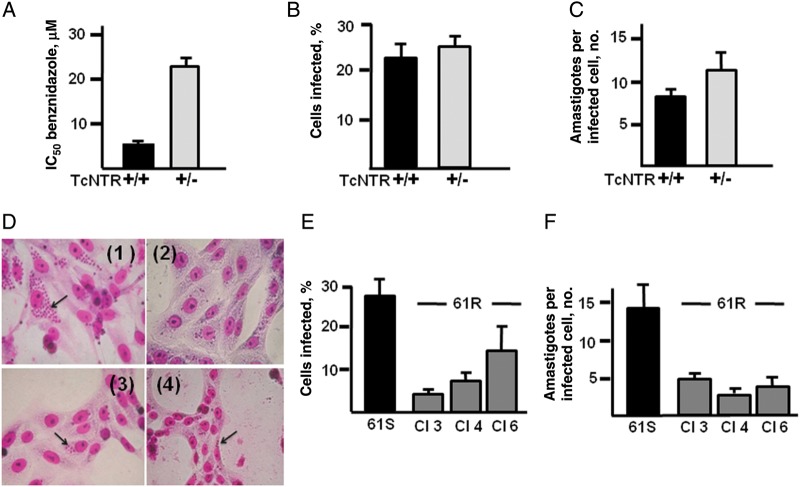Figure 4.
Loss of 1 copy of TcNTR does not reduce infectivity. Targeted disruption of TcNTR in 61S epimastigotes was achieved using a construct that confers blasticidin resistance (Supplementary Figure 1). A, TcNTR heterozygotes are benznidazole resistant. 61S TcNTR homozygotes (+/+) and heterozygotes (+/−) were tested to establish their median inhibitory concentration (IC50). Data are the mean (±SD) of 3 experiments. B, Heterozygotes are not deficient in infectivity. Cell-derived trypomastigotes were added to an L6 cell monolayer at a ratio of 1:5 cells to parasites. Infected cells were counted after 72 hours, (experiment performed in triplicate, with data presented mean ± SD). C, Heterozygotes are not deficient in their ability to replicate in mammalian cells. Infections were performed and monitored as described above. D, Infection of Vero cells with 61S sensitive and 61R resistant parasites, stained with Giemsa: (1) 61S; (2) 61R clone 3; (3) 61R clone 4; (4) 61R clone 6. Arrows indicate intracellular amastigotes 48 hours after infection. E, Benznidazole-resistant clones are deficient in their ability to infect Vero cells. Values shown are from 5 experiments (P < .05). (F) Benznidazole-resistant clones are less able to replicate in Vero cells. Values shown are from 5 experiments (P < .05).

